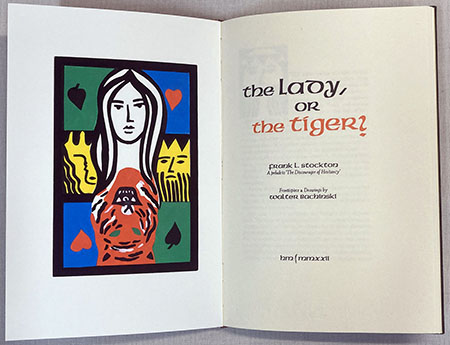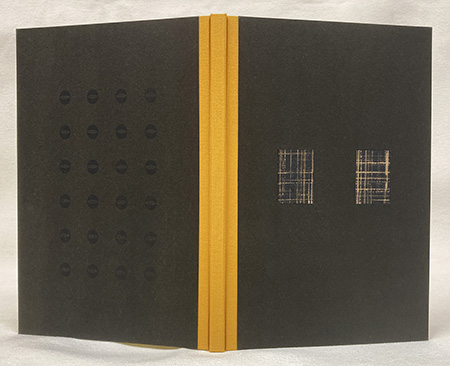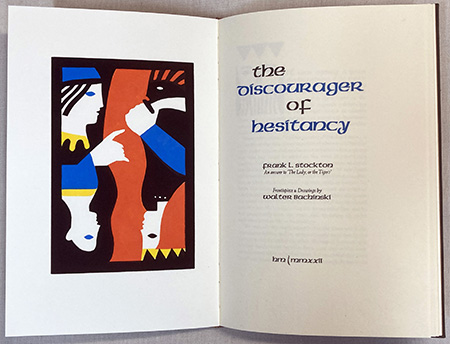Two linked short pseudo-fables presented in a tête-bêche format: two fronts, no backs. Published in the 1880s, one story made Stockton one of America’s most a celebrated and successful authors of the day. But its ambiguous ending left readers pestering him to know what happened; his begrudging reply – the second story – was more of the same. Strictly speaking the stories can be read in either order, hence the book's format: you decide where to start.
Both title pages are accompanied by a six-color pochoir frontispiece by Walter Bachinski, created at his Shanty Bay Press studio in Ontario. Walter also created a dozen illustrations – one for each page – that are printed in a variety of colors throughout the text.
The book (6 x 9 inches, 15 leaves) is set in Weiss and American Uncial types, printed in five colors with a handpress on dampened Barcham Green Canterbury paper. The edition of 30 press-numbered copies, signed on the colophon by the artist, is uniformly bound in quarter cloth with printed paper sides, painted endpapers, and a slipcase.


